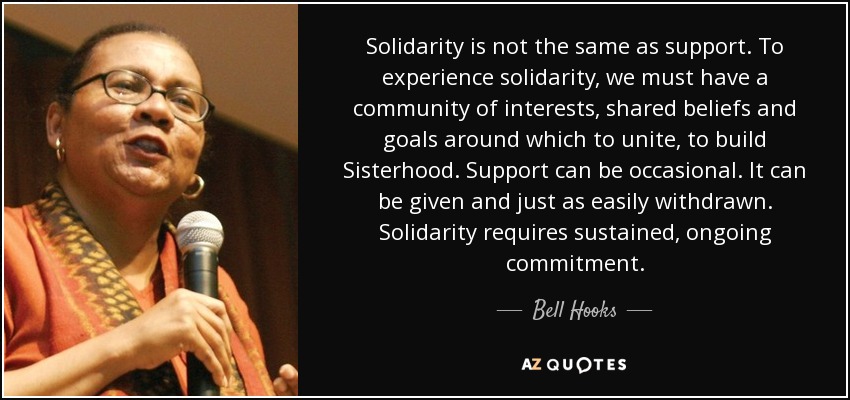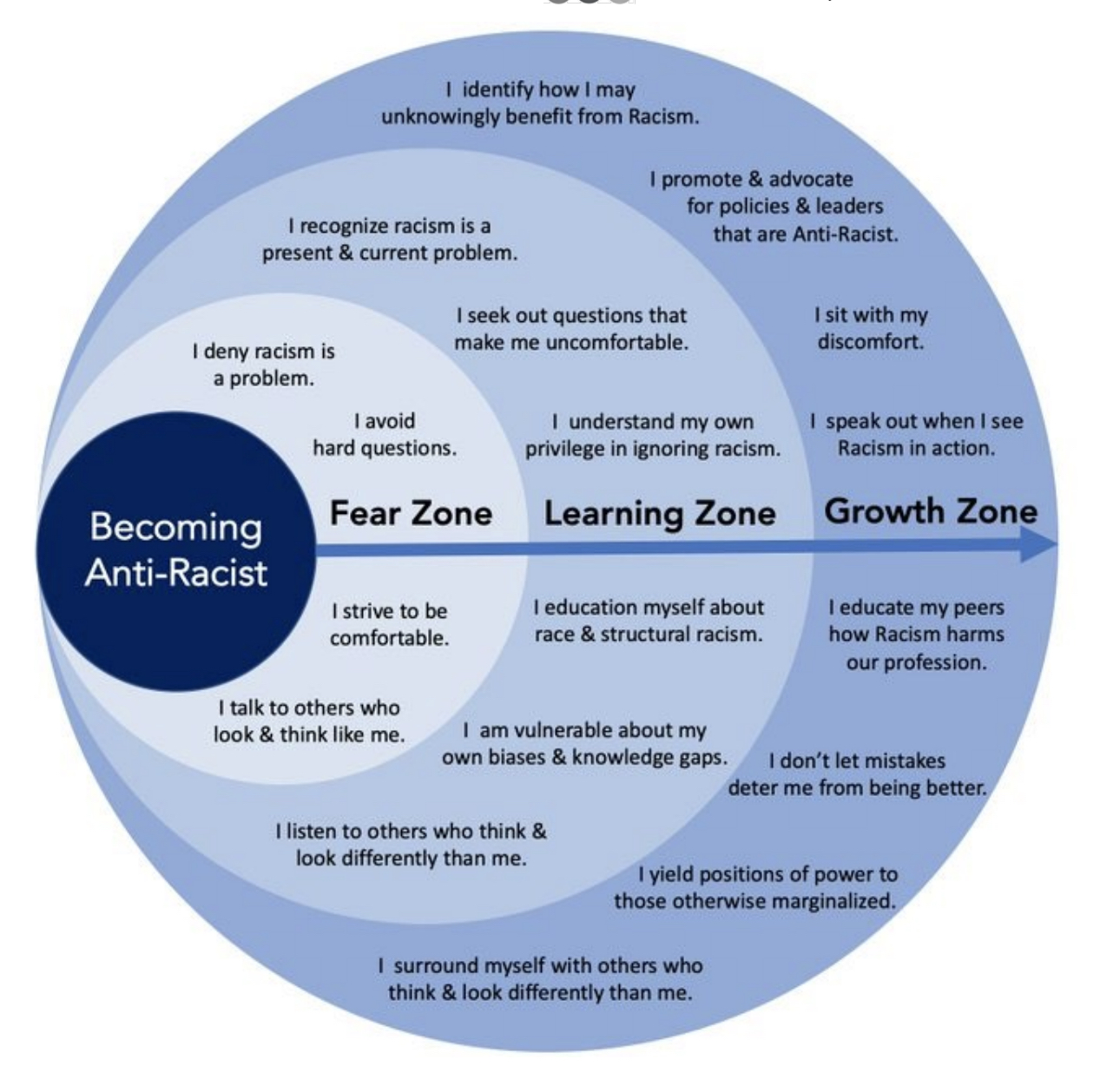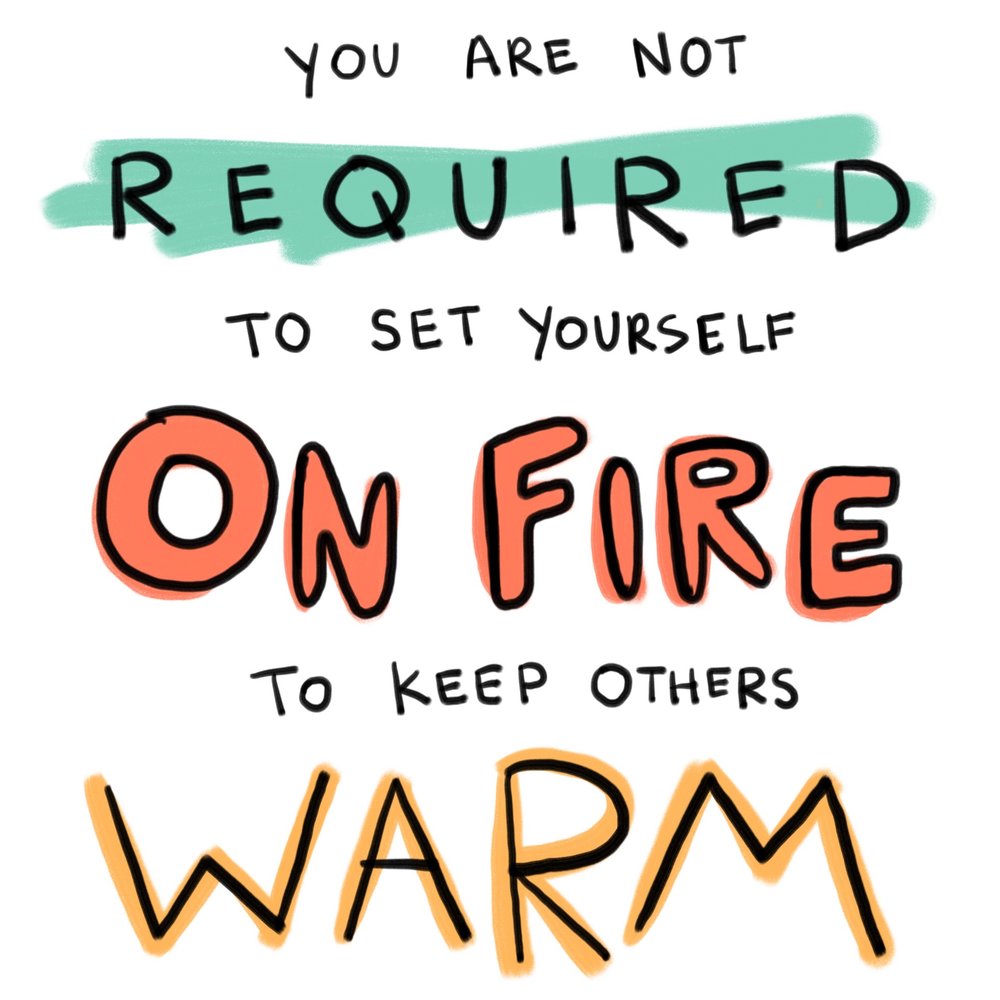Becoming Anti-Racist
Created by Tamara Smith 21' and Lucy Gordon 21'
What is allyship?
Allyship is not conditional on whether you have been offended or someone individually is not nice to you.
-
- Allyship is based on a set of beliefs about the human rights of others that are sustained by long term goals, motivations, and beliefs.

A quote from bell hooks, a feminist scholar, author and activist summarizing principles of solidarity rather than support.
Situating Your Beliefs about Anti Racism
Anti-Racist beliefs can have different goals.
-
- Abolitionist Work
Believes in the "act of officially ending or stopping something" altogether, and addressing the problem through means outside of said practice or institution (Merriam Webster, 2020).
-
- Reformist Work
Believes in "advocating the reform of an existing system or institution instead of its abolition and replacement" (Collins English Dictionary, 2020).
How do you situate yourself within this work?

Identifying where you currently feel you are, and letting that inform what steps you should take.
How do I sit with my own discomfort?
-
- Understanding whether you are in a dominant or marginalized group.
- Dominant vs Marginalized
- Rather than Majority and Minority
- Understanding that it is not about who has the most people but about whose norms dictate society.
- Dominant vs Marginalized
- Understanding whether you are in a dominant or marginalized group.
-
- Anti-racist work is not about who you are but the choices you make moment to moment.
- This work comes with the understanding that you can be marginalized by your gender, sexual orientation, ethnicity, and other aspects of identity beyond race.However, when you are tackling anti-racist work as a white person marginalized by other aspects of identity, you are still in the dominant group.
- And can make the choice to be an ally or co-conspirator in tackling anti-racist work through your actions.
- Anti-racist work is not about who you are but the choices you make moment to moment.
What does Allyship Look Like? versus Performative Allyship
What is performative activism institutionally?
-
- Statements from organizations with no plans attached
- Listening Sessions or Town Halls with no follow-up plans afterward
- “Good Optics” - Preserving a Reputation or image with no follow through on action
Non-Performative Allyship involves follow-through
-
- Have actionable steps
- If you do not know what actionable steps to take, poll or survey the group you are
trying to serve to address the needs.
- Clearly outline those needs in a document.
- Choose an appropriate path to proceed.
- If you do not know what actionable steps to take, poll or survey the group you are
trying to serve to address the needs.
- Have actionable steps
(1) Who needs to hear these concerns? A student leader, a school administrator, government representative
(2) How should the concerns be outlined? A letter, an email a call, a meeting, etc.
(3) How will you follow up on these concerns? Setting a date for a follow-up conversation over email, call or in-person
What does allyship look like?
Co-Conspirators
-
- Having someone specific in your classroom, workplace, etc that you feel comfortable having these conversations with that you can depend on to support you in calling out racist actions .
- Or supporting you specifically when you notice a professor or boss directs racist words or actions at you.
Self-Care and Community Care for Black People and People of Color

"You are not required to set yourself on fire to keep others warm"
-
- It is okay to set boundaries for yourself
- It is not your responsibility to be an educator to all
- If interested in talking to a mental health counselor, use tools to find someone who you would feel comfortable with, that you feel would hear and understand your needs
- You deserve to seek care that prioritizes you and your identity
Tactics for Actively Addressing Racist Commentary
How to challenge racist commentary as suggested by the Kirwan Institute for the Study of Race and Ethnicity at Ohio State University:
(1) Be literal or refuse to rely on assumptions being made: “That’s just the way those people are, you know?” “Actually I don’t know what you
mean by that. I’ve met a lot of people in that group and they’re all unique individuals.”
(2) State that you are uncomfortable: “Assumptions about an entire group of people make me uncomfortable. I don’t think
that we can take that assumption for granted or make our decisions based on it.”
(3) Remove yourself from the conversation: “We have this same fight every holiday gathering. Clearly we’re not going to change
each other’s minds. I won’t agree to disagree because people’s humanity is too important
for that, but I will ask that we not have this fight right now. Can we please enjoy
family time together instead?”
Suggestions on how to be an active bystander in potentially dangerous situations as suggested by The Southern Poverty Law Center:
The Five D's
(1) Direct
-
-
- If you are in a situation where you are safe to do so you can address the harasser “Leave them alone,” “That’s inappropriate,” “That’s disrespectful” or “That’s not OK.” The most important thing is to keep it succinct.
- Do not argue or debate the harasser, since this is how situations escalate. If the harasser responds, assist the person targeted instead of engaging.
-
(2) Distract
-
-
- The goal is to interrupt the incident by engaging with the person targeted. Ignore the harasser.
- Pretend they are your neighbor, colleague, or friend, and start a conversation even offer to walk them to their destination.
- Read the situation and choose your approach accordingly. The person targeted will likely catch on, potentially de-escalating the situation.
-
(3) Delegate
-
-
- Turn to a third party for help.
- If you are not with a friend, speak to someone near you who notices what’s happening and might be in a better position to intervene.
-
(4) Delay
-
-
- If you can’t take action in the moment, you can make a difference afterward by checking
on the people targeted:
- Offer to accompany them to their destination. You can also offer to sit with them for a moment.
- If you’ve documented the incident on video – or in any other medium – ask them if they want it.
- Share resources, such as contact information for advocacy groups that can help. If they want to report the incident, offer to assist.
- If you can’t take action in the moment, you can make a difference afterward by checking
on the people targeted:
-
(5) Document
-
-
- Record or document the incident with caution:
- If the person needs help, address one of the prior D's first.
- Keep a safe distance when documenting.
- Clearly state the date and time.
- Verify landmarks like street signs, storefronts, train station platform signage.
- Record or document the incident with caution:
-
